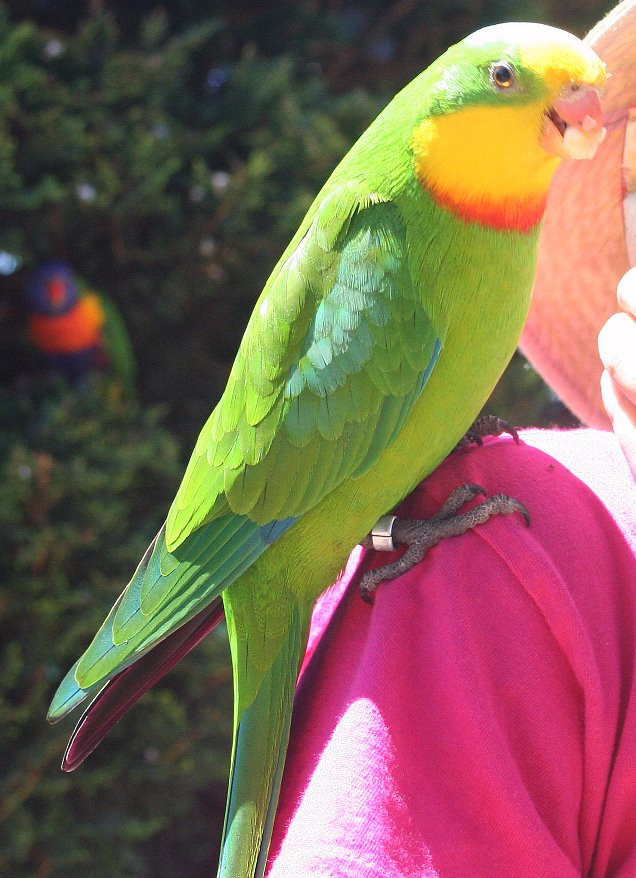|
| 질의: description | 결과: 9512번째/10150 | |
Superb Parrot (Polytelis swainsonii) - Wiki
| 제목: | Superb Parrot (Polytelis swainsonii) - Wiki
| |

| 해상도: 636x878
파일크기: 125195 Bytes
등록시간: 2007:12:17 09:56:24
|
Superb Parrot
From Wikipedia, the free encyclopedia
Order: Psittaciformes
Family: Psittacidae
[Photo] Superb Parrot (Polytelis swainsonii). Walk-in Aviary, Gungahlin, Australian Capital Territory. Date November 2006. Author Cas Liber. License: public domain.
The Superb Parrot, Polytelis swainsonii also known as Barraband Parrot is a parrot native to southeastern Australia. It is one of three species in the genus Polytelis.
Description
It is a medium-sized bright green parrot, approximately 40cm long, with long tail feathers, yellow-green below and yellow eye. The male has a scarlet band upper chest, bright yellow face and throat. The female has a pale blue-green face, greyish-green throat and yellow thighs.
An Australian endemic, the Superb Parrot is restricted to the woodlands of New South Wales and Victoria. It nests on hollow limb or a hole in a tree. The diet consists mainly of eucalypt flowers, fruits, nectar and pollen.
Conservation Status
International
Due to ongoing habitat loss, small population size and limited range, the Superb Parrot is evaluated as Vulnerable on the IUCN Red List of Threatened Species. It is listed on Appendix II of CITES.
Australia
Superb Parrots are listed as vulnerable on the Australian Environment Protection and Biodiversity Conservation Act 1999. Their conservation status also varies from state to state within Australia. For example:
The Superb Parrot is listed as threatened on the Victorian Flora and Fauna Guarantee Act (1988). Under this Act, an Action Statement for the recovery and future management of this species has been prepared.
Threatening Processes
During February-June 2005, "accidental" logging in the Barmah State Forest destroyed 60 per cent of the nesting colonies of the Superb Parrot (6000 tonnes of river red gums): with fewer than 150 breeding in Victoria this has severely compromised their chances of survival.
http://en.wikipedia.org/wiki/Superb_Parrot
| The text in this page is based on the copyrighted Wikipedia article shown in above URL. It is used under the GNU Free Documentation License. You may redistribute it, verbatim or modified, providing that you comply with the terms of the GFDL. |
|
^o^
동물그림창고 똑똑전화 누리집
^o^
|
|